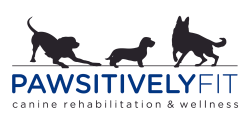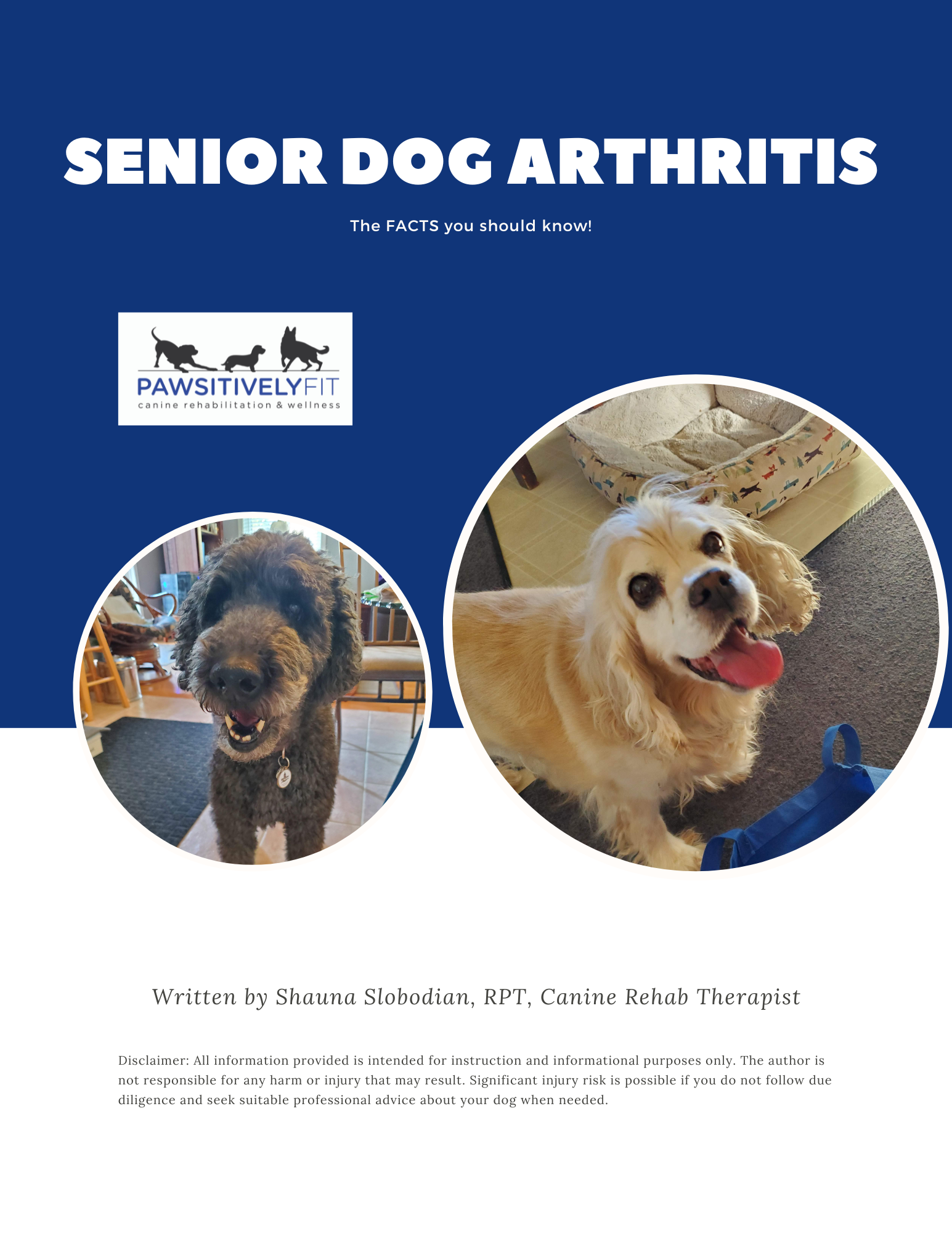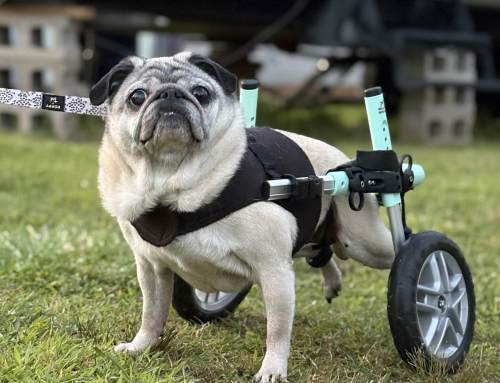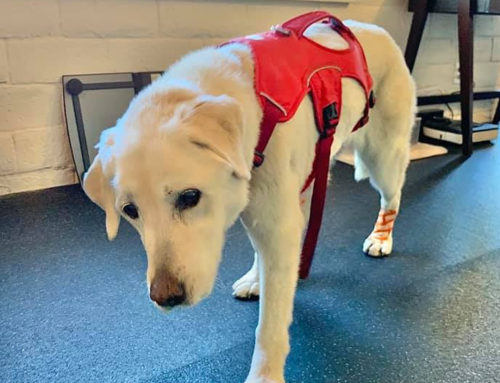We specialize in helping senior dogs at Pawsitively Fit, but have you ever wondered what conditions we see most often? We thought it would be fun to reflect on this and share!
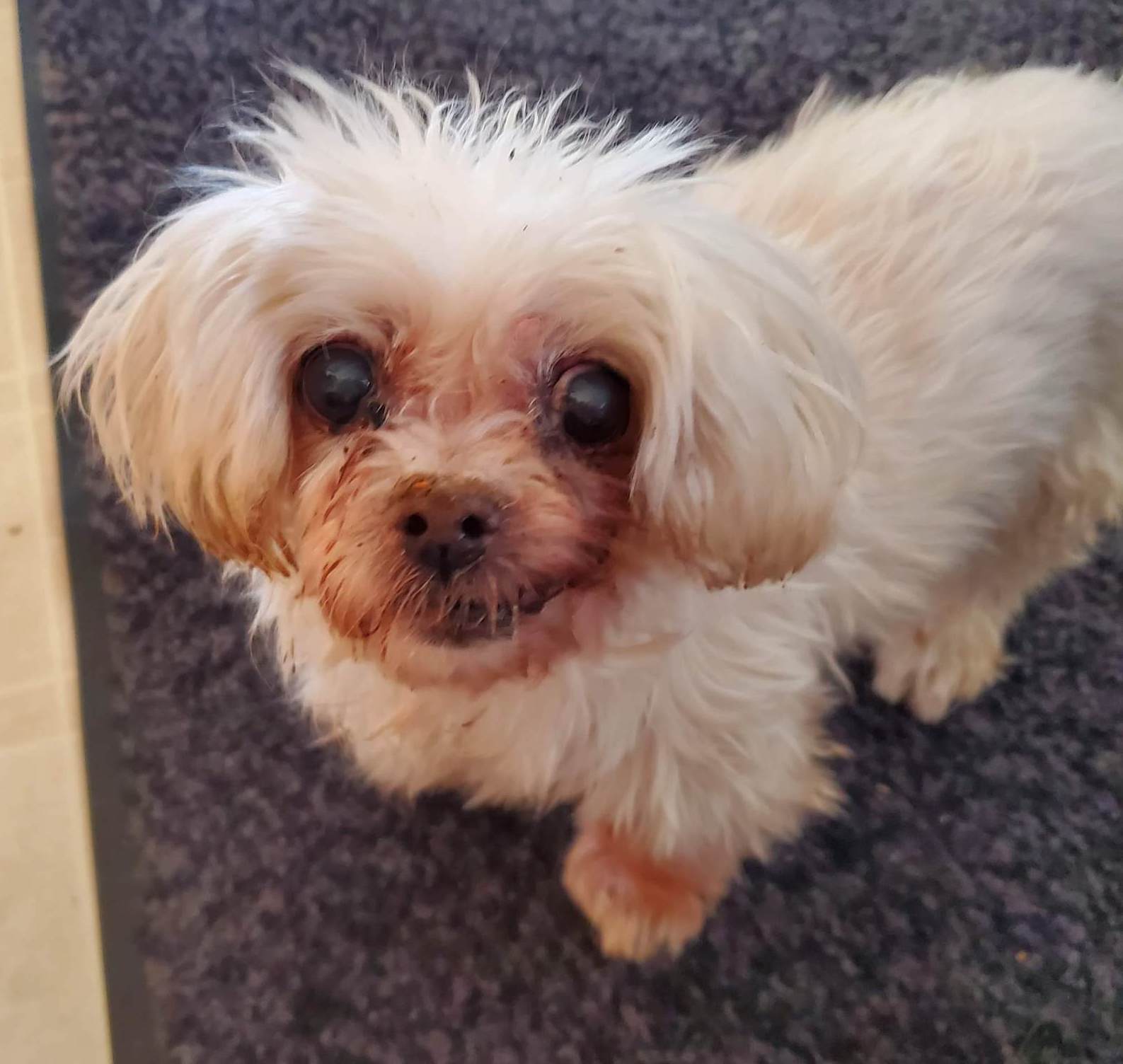
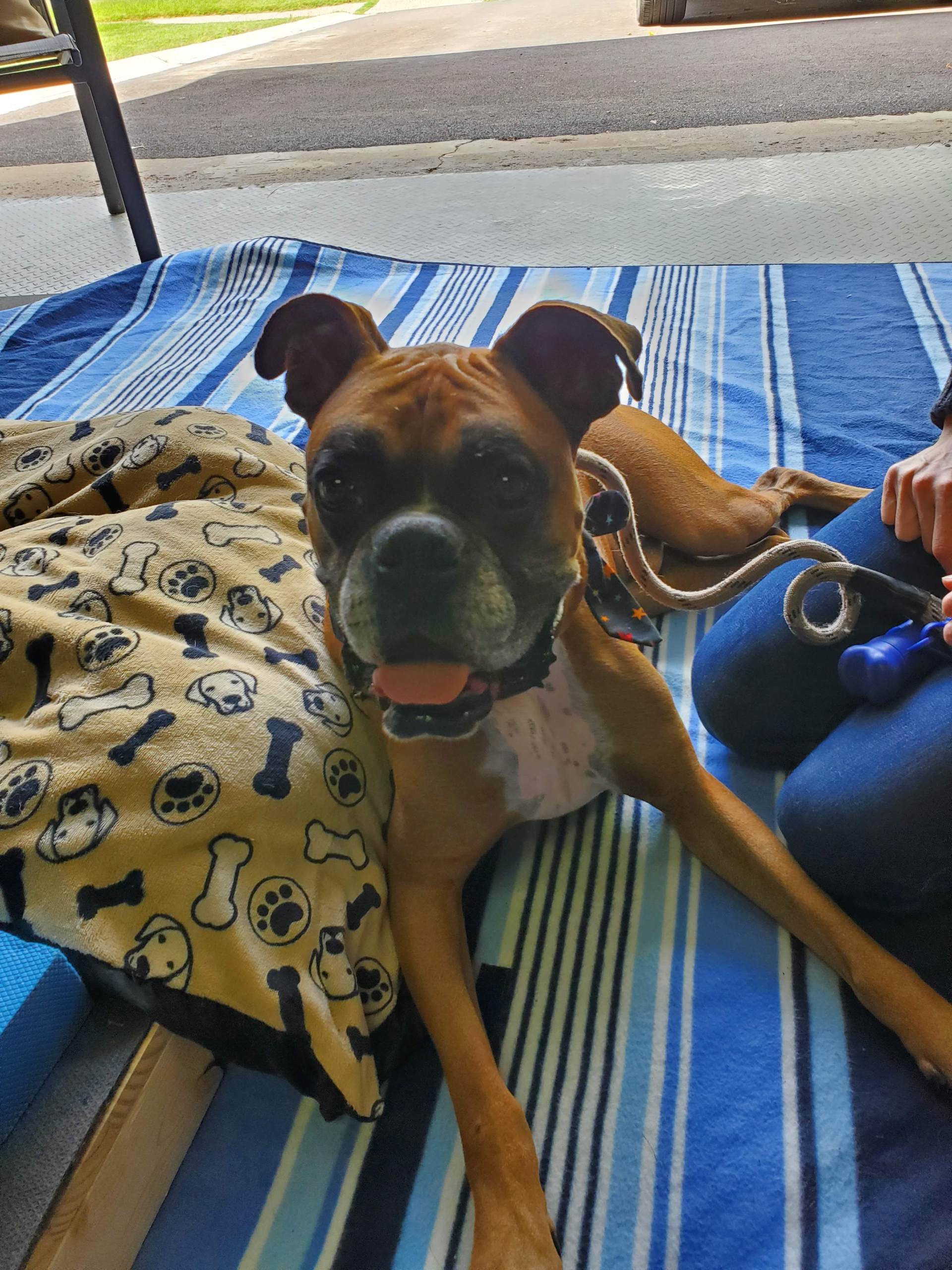
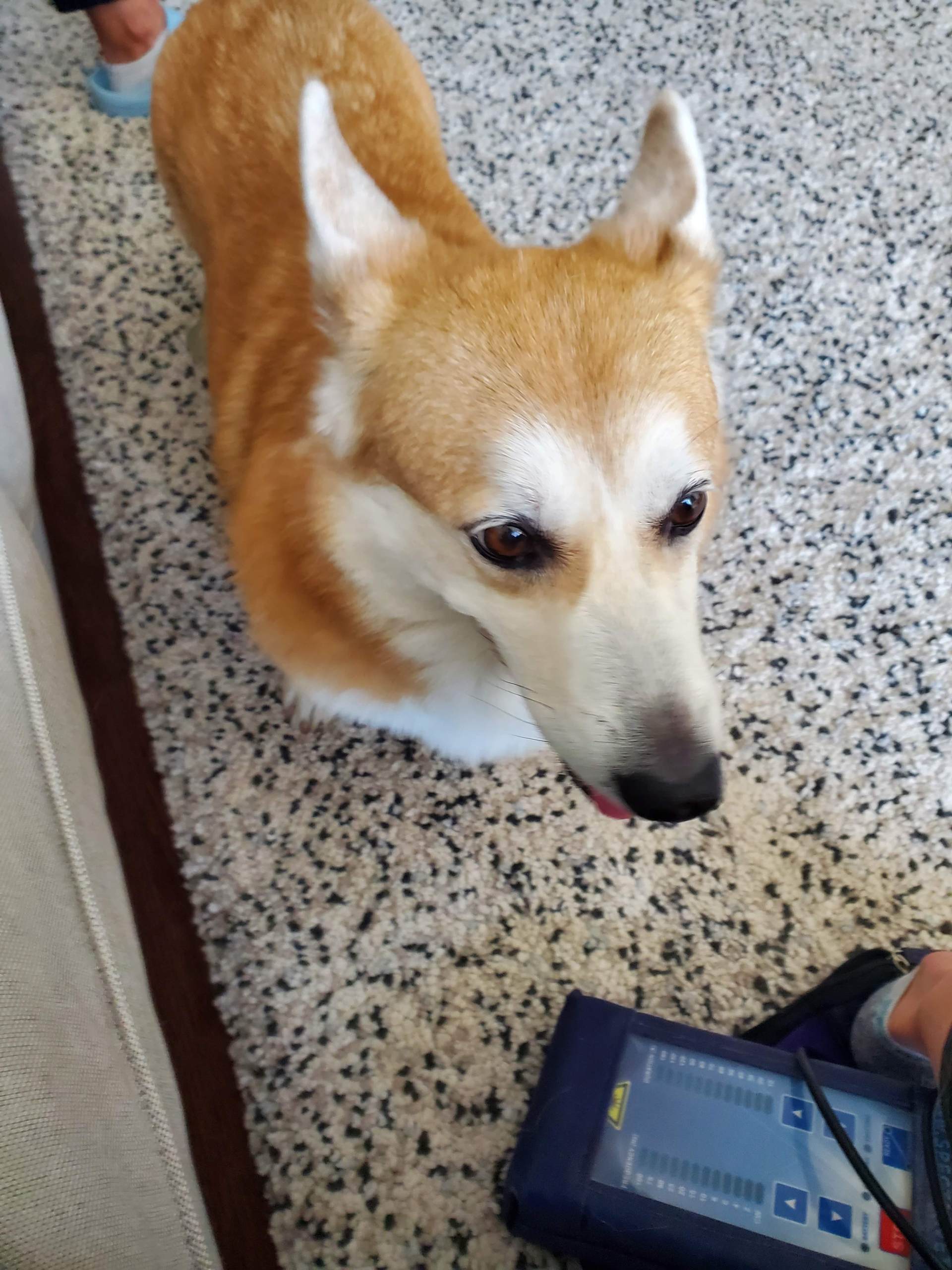
Our Top 5 List of Most Common Conditions Seen (in no particular order):
Surprised by the list? Read on to learn a bit more about each condition. What should you keep in mind? Many injuries don’t happen in isolation and with time often lead to other dysfunctions such as muscle pain or strains, meniscus tears or spine and rib issues. At Pawsitively Fit, we evaluate your WHOLE dog, not just the area they’ve injured. Otherwise a lot gets missed!
Arthritis or Osteoarthritis
This is likely not surprising as a top condition we treat. Did you know 4 out of 5 senior dogs has arthritis? What is surprising is that a lot of people realize HOW beneficial rehab can be for arthritis. Rehab can help with reducing pain in not only the arthritic joint but also the muscles and joints that can be affected if a dog is using their body differently due to pain! We commonly find sore ribs and lat muscles (think of the muscles you use if you were to do a push up!).
The benefit of rehab that I think is most often overlooked is strengthening the muscles that support the joint. This is KEY as it helps stabilize the joint and prevent further shear that causes more wearing of the cartilage, inflammation and pain. That extra strength and support helps keep your dog active, going for walks, and playing like they did in their younger years!
If you take nothing else away from this post, just know that arthritis care is more than just pain medications and joint supplements!
Cruciate Tears
Cruciate tears (aka CCL or ACL tears) is an epidemic among dogs right now and for many reasons – early spay/neuter, overweight dogs, weekend warrior dogs – and it’s affecting dogs of all breeds! The cost of cruciate surgery is around 5 thousand dollars and up! That’s a huge pill to swallow for many dog owners! Often owners are hesitant about surgery for different reasons and want to know that they have exhausted all the non-surgical options before going for surgery.
The other thing that we’ve seen at least a handful of times over the last year are dogs that were diagnosed with cruciate tears, told they needed surgery and when we see them we don’t actually see any signs of a tear. It’s possible that something else was going on that looked like a cruciate tear but wasn’t, such as a muscle strain. What we still often find with these dogs are that they have weakness and some issues due to weight shifting off of a painful leg.
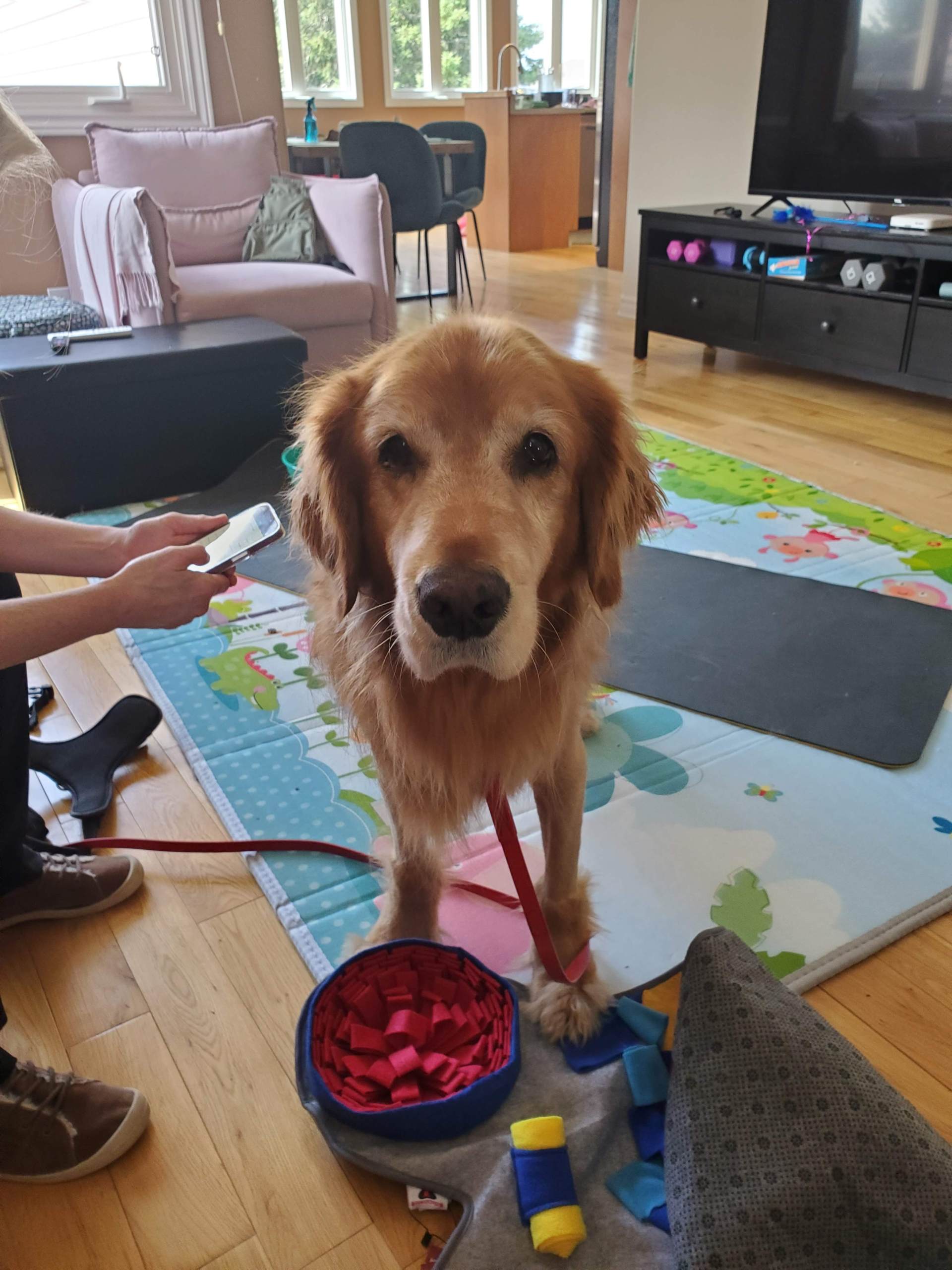
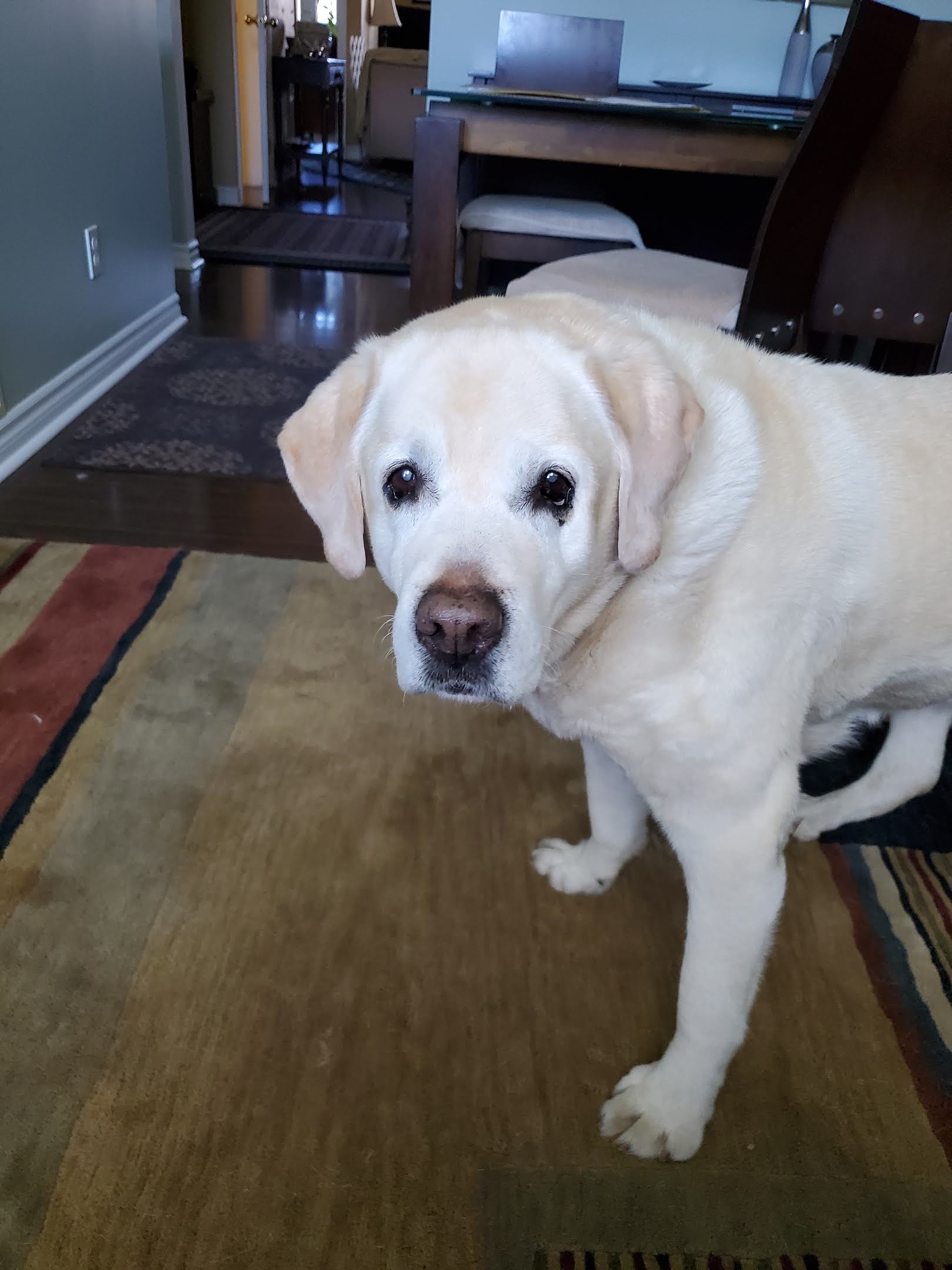
Elbow and Hip Dysplasia
There are many factors that go into deciding what to do after a CCL tear is confirmed. The age and health of the dog, finances and an owner’s beliefs are a few. Surgery is likely to be recommended for younger, large, healthy dogs and the outcomes are generally very good. For older dogs, smaller dogs, or dogs with other healthy issues, surgery may not be the best strategy. For those dogs, things like bracing and rehabilitation should be considered. It is always important to have a good conversation with your veterinary or canine rehab therapist about the best option for your dog.
At Pawsitively Fit, we have worked with many dogs both after surgical repair of a CCL tear and non-surgical management. There is no right or wrong answer for all dogs about what the best choice is. The best choice is knowing all of your options and making the best decision based on you and your dog’s unique circumstances. In upcoming blogs, we will discuss more about the different types of surgeries and going the non-surgical route!
Luxating Patella
We see mostly small dogs for this condition but we’ve seen a few big ones. Some have had surgery to help keep that patella inside the groove and others with a less severe grade of dysfunction, we work with to prevent progression of the condition and the need for surgery.
Rehab cannot prevent all cases from needing surgery, but more mild cases can benefit from specific muscle strengthening, muscle lengthening and symptom relief to keep them active and having fun!
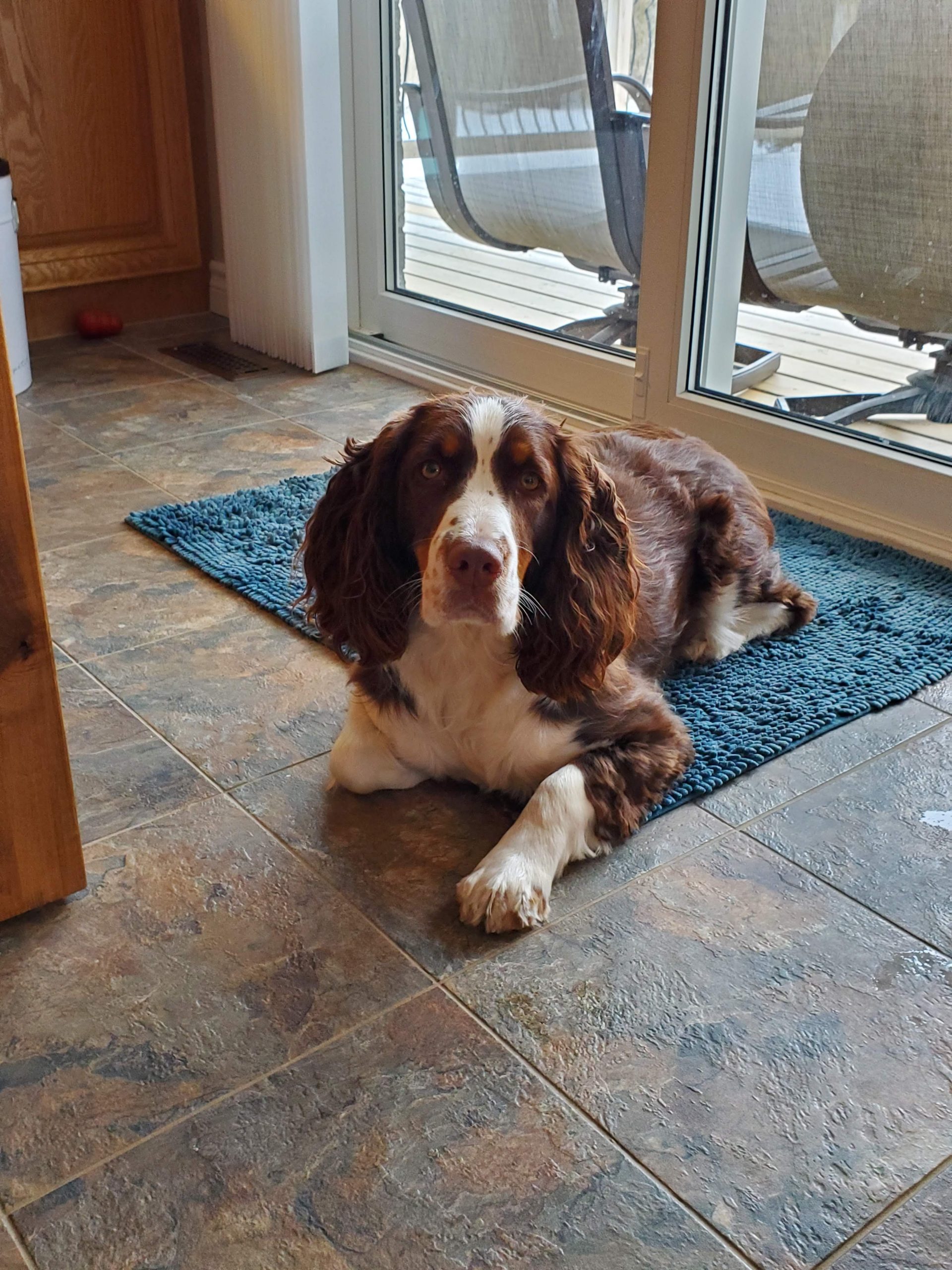
Intervertebral Disc Disease or IVDD
IVDD can be conservative management without surgery OR it can be post-operative. Did you know dogs other than dachshund and other small dogs can also experience IVDD? Senior dogs can have a slower onset of symptoms that can be shrugged off until a tipping point is hit.
For acute cases, the goal is to reduce pain, open up the pathways for the nerves to flow and maintain flexibility of the body. Education is so vital for owners to understand WHAT is going on and HOW to manage their dog. Post surgically, rehab is very important to restore normal functioning like the ability to walk, do stairs or play using their bodies properly! Without good rehab, many dogs will continue to favour their unaffected limbs and be left with deficits.
